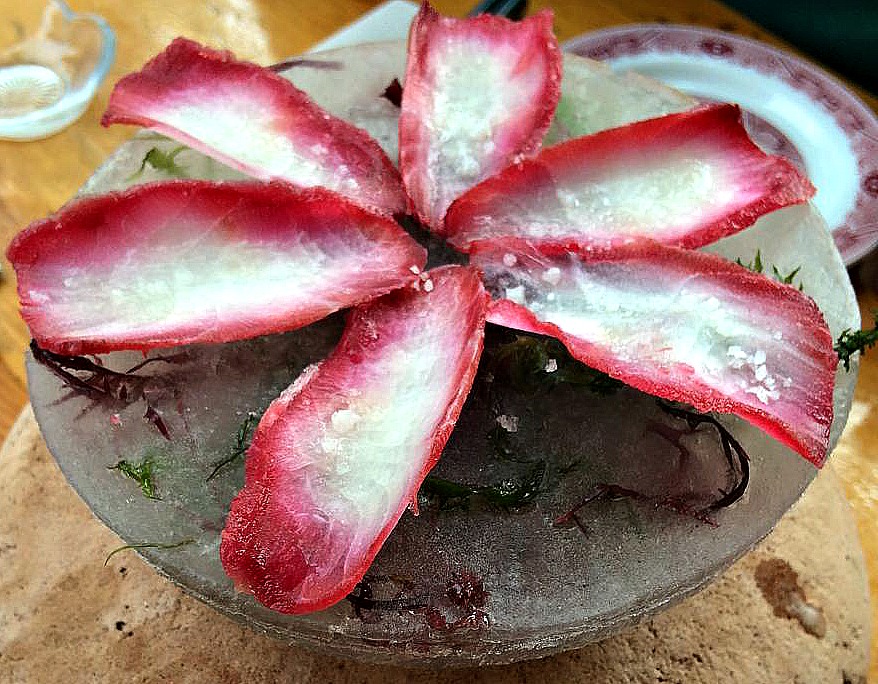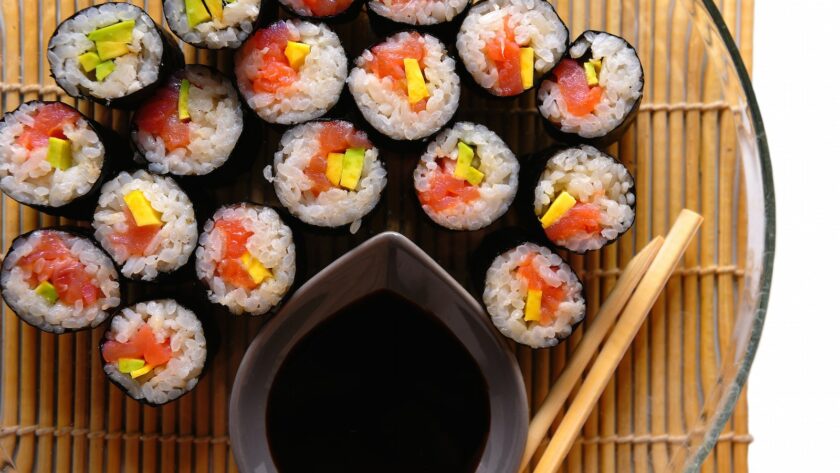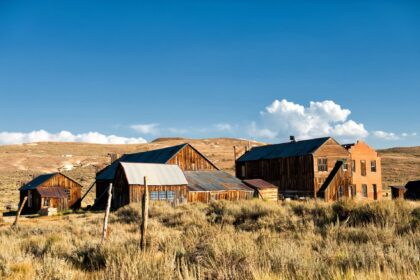
Asian carp and Japanese knotweed might not be what sushi lovers would associate with rolls, but these ingredients have a place at Miya’s Sushi in New Haven, Connecticut. These nontraditional fixings are included on an invasive species (non-native plants and animals) menu that has been served at this three decade, family-owned eatery since the mid-2000s.
According to Chef and Owner Bun Lai, it’s been well received with patrons; however, this alternative meal offering displays Miya’s focus on being an ecologically-minded sushi restaurant – and being touted as the first sustainable one of its kind.
“When using invasive species, you’re talking about an abundant species,” explains Lai, “They’re wild; they’re not farmed. They’re destructive of our environment. If you eat them up, you can literally help balance out that eco-system again.”

As an early innovator in sustainable dining, Miya’s Sushi has stayed a fixture in downtown New Haven since being opened in 1982. Much of its green-minded philosophy is due to the Lai family. Lai’s mother — who named her restaurant after her daughter — balanced both running the kitchen and cooking for her three children, all of which had a part in helping out with the family business.
Now with Lai being more of the spokesperson for Miya’s Sushi with his mom still overseeing the operation, Lai says that his mother’s, and now restaurant’s, cooking relates to how he and his siblings were raised. And what they ate.
“My mom was a nutritionist, so we were very cognizant of the importance of eating a lot of vegetables and fruit,” remembers Lai. Both her and her husband, a scientist, are gardeners, and, according to Lai, the family ate what they grew far before the term “farm to table” was coined.
Even as a plant-based diet has earned acknowledgment for its personal health benefits and ecological purpose, Miya’s had been dishing out this kind of menu for decades. For that reason they don’t carry any sort of livestock on their menu – and for the reason they think it’s inhumane.

Creativity In The Kitchen
The menu has also been innovative. In the mid-nineties, Miya’s introduced what is credited as the creation of a sweet potato roll alongside other vegetarian-minded options. Even with fish being an essential part in sushi, Miya’s technique implements sustainable seafood measures. Fish choices have featured pole caught Albacore tuna from Washington and wild salmon – based on availability – but even nontraditional ingredients like Chesapeake Bay crabmeat. And although Miya’s take may turn away some customers, the restaurant earns and retains patrons.
“We’ve got people with really open minds that will pack the place, and it’s not because of tuna,” adds Lai.

For starters, miso soup gets an autumn flavor with additions of slow-roasted pumpkin, sweet potato, and acorn squash with locally foraged seaweed. With tempura, the Tempura Weed Chee consists of the leaves of a Japanese Knotweed plant are kimchee-pickled and then fried in a whole wheat batter (a gluten free version with garbanzo flour is available).
“We literally use our set menus as a way of not only creating fun and delicious experiences but also thoughtful experiences for people,” says Lai.
In the kitchen, Lai has been preparing the next set of chefs who will be carrying on its legacy. “It’s a full U.N. in there,” he says about the nationalities of the restaurant’s original staff: Puerto Rican, Mexican and Afghan.

Culinary-Themed Causes
Publicly Lai brings attention not just to his family’s restaurant but also culinary-related causes such as environmental pollution. Both a 2013 James Beard Foundation nominated chef and a 2011 Monterey Bay Aquarium’s Seafood Ambassador Award recipient, Lai has spoken at venues including Yale and Harvard on how everything from nutritional concerns to climate change and even social justice for farmers and day laborers can impact food supplies.
Also a former director of nutrition for a nonprofit working with low-income pre-diabetics, Lai says that it’s important to ask questions about what is happening to our food. What Miya’s does is add to the conversation.
Featured image courtesy of ToskanaINC/Shutterstock
Also Check Out:
The Complete Guide to Sushi and Sashimi: Includes 625 step-by-step photographs by Jeffrey Elliot [Delicious Reads]
A Guide To Dining Etiquette Around The World [Blog Inspiration]
Sushi Chef Sushi Making Kit Sushi Chef [Cultural Creativity]
Latest posts by Michele Herrmann (see all)
- 15 Unique Gifts That Give Back To Charity - Jan 21, 2024
- Foodie Fun: 12 Delicious Made In America Gift Ideas - Nov 17, 2019
- How Deidre Mathis Made Her Dream Of Starting A Hostel Business A Reality - Jan 31, 2019
- Where To See NYC’s Best Street Dancing (While Giving Back) - Oct 4, 2017
- 6 Creative & Curative Tea Shops In Portland, Oregon - Aug 28, 2017






Japanese food what’s not to love? Unbelievably delicious, made from ingredients, healthy and ready in just a few minutes.
@Stephen: Absolutely!